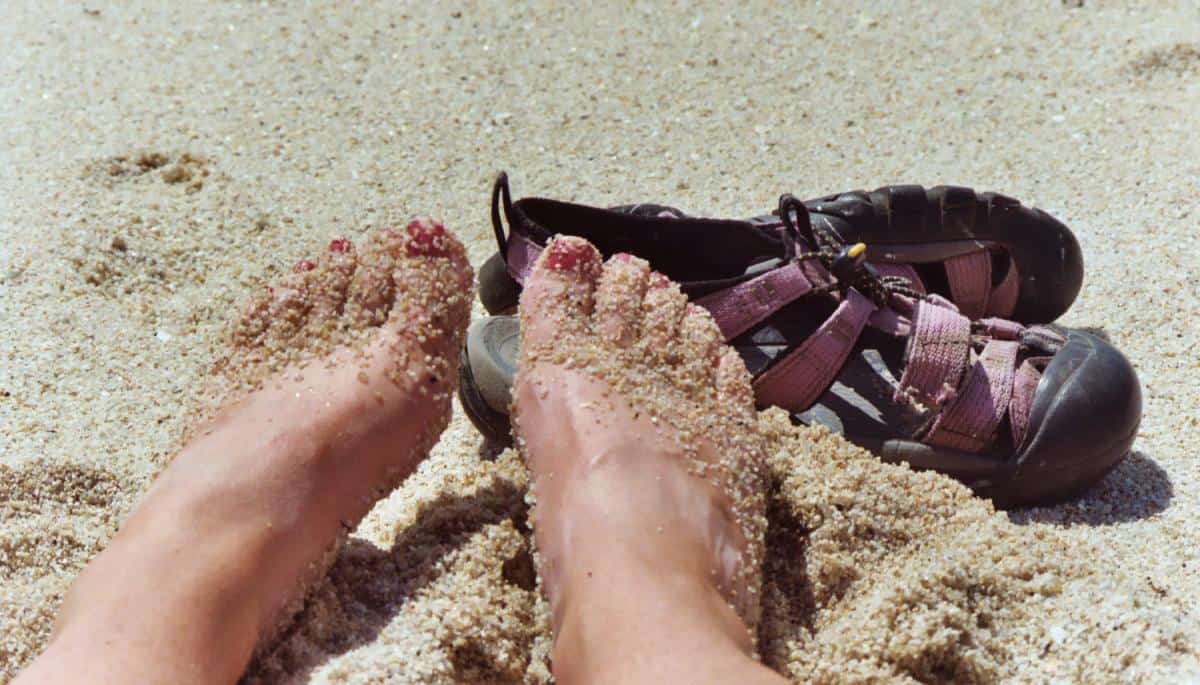Summer Sailing Footwear – Flip flops or not?
“What shoes should I wear on a tall ship?”
Not everybody has feet that can clamber up the mast of a tall ship barefoot, or can do the Australian backpacker look, travelling with just a pair of Brazillian ‘Havaianas’.
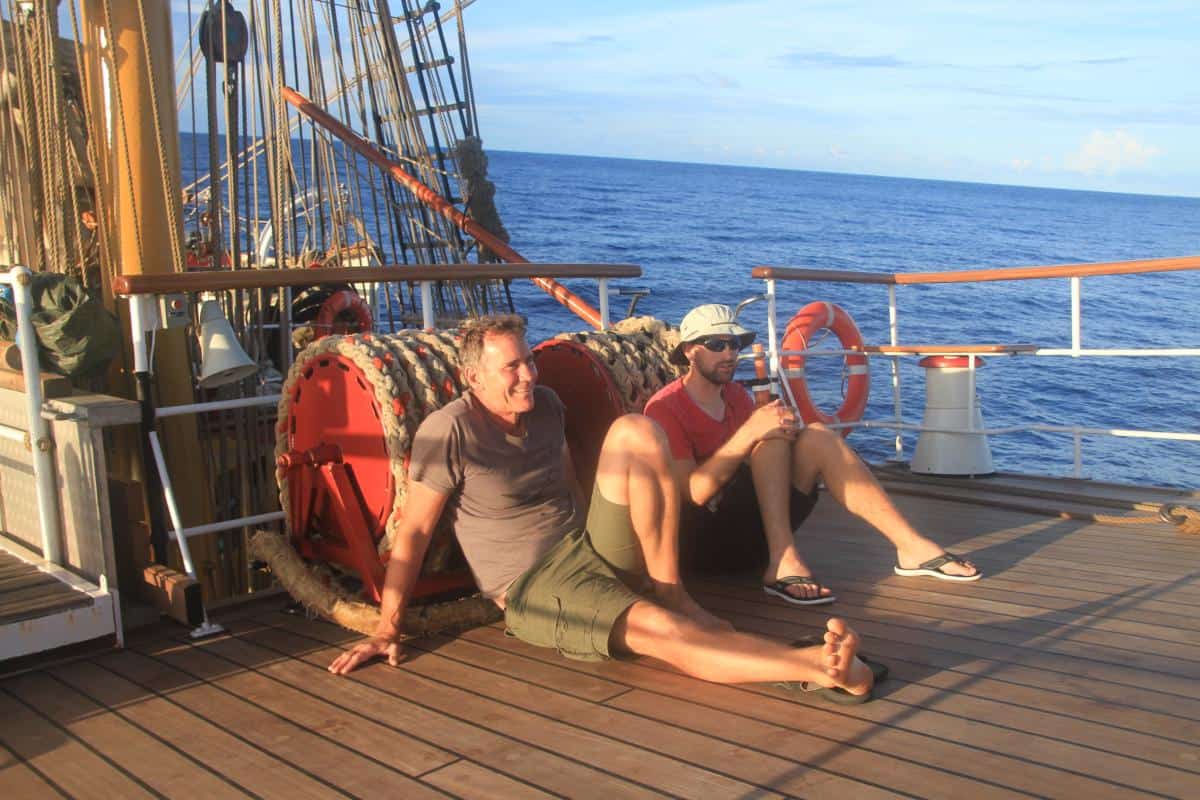
Busting the Bare Foot Myth
Bare foot on a wooden deck is lovely at anchor, where you are unlikely to stumble and stub your toes on a cleat. It might be a nice fantasy but climbing the rigging is slow and painful if you are not already a wild barefoot child.
Also going ashore without shoes will limit your adventure. In wet weather scrunching your feet up to grip slippery decks is a lot harder than relying on non slip deck shoes.
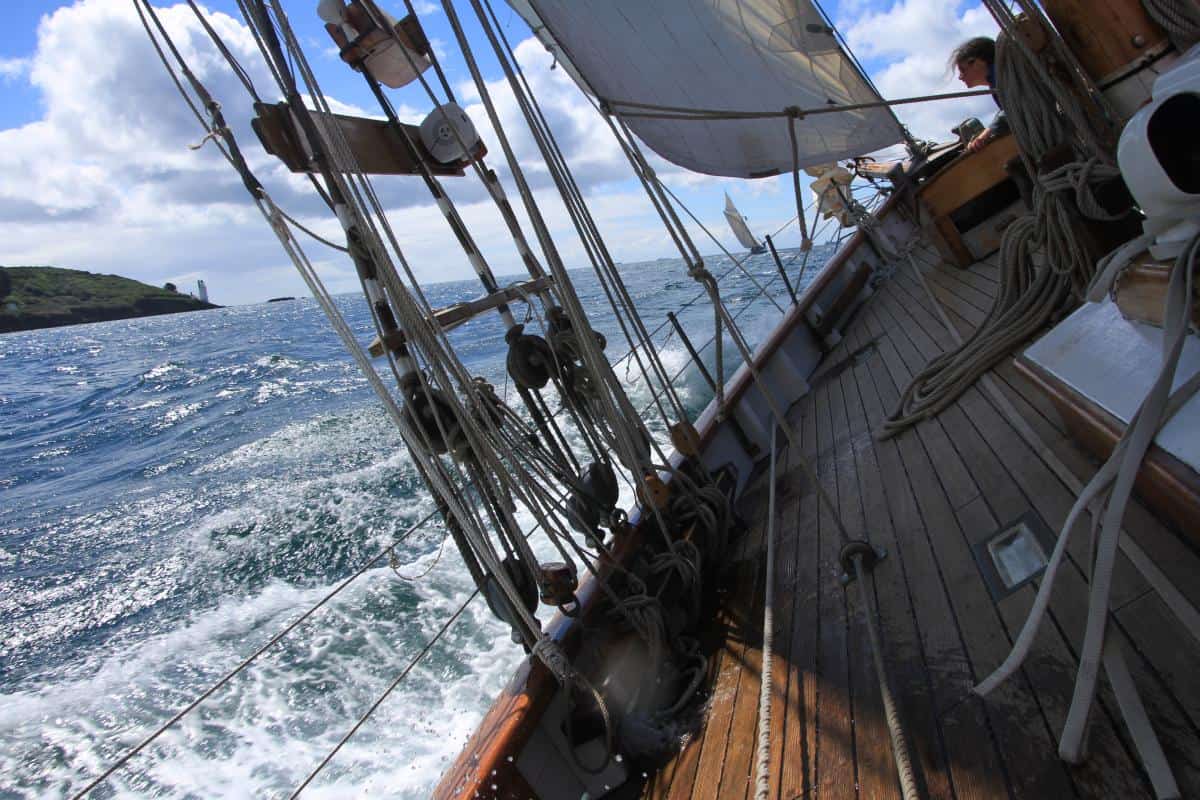
Where can I do Barefoot Sailing?
As a youngster growing up on the cruel pebble beaches of Sussex, I was never able to embrace barefoot as an outfit. My fear of flip flops was reinforced by crewing UK tall ships, where steel toe capped rigger boots were considered ‘de rigueur,’ even with shorts in summer.
Imagine my spiritual awakening in my 40’s when I sailed to Brazil on a Dutch tall ship and my ship mates pattered around in bare feet. You were even allowed to climb the rigging like the poor shoe-less sailors of old.
My Finnish, Australian and South African shipmates had soles as hard as nails. They were not too chuffed at me wearing sandals, as I couldn’t tell if I had stepped on their toes.
When is Barefoot a Good Idea?
- Airing your feet in the tropics
- When being an authentic pirate as a film extra
- When steering – as no other job to rush to (but don’t forget suncream on tops of feet)
- Off watch -keep shoes close for exciting action you might want to join
- When your mates are also all barefoot & feeling vulnerable
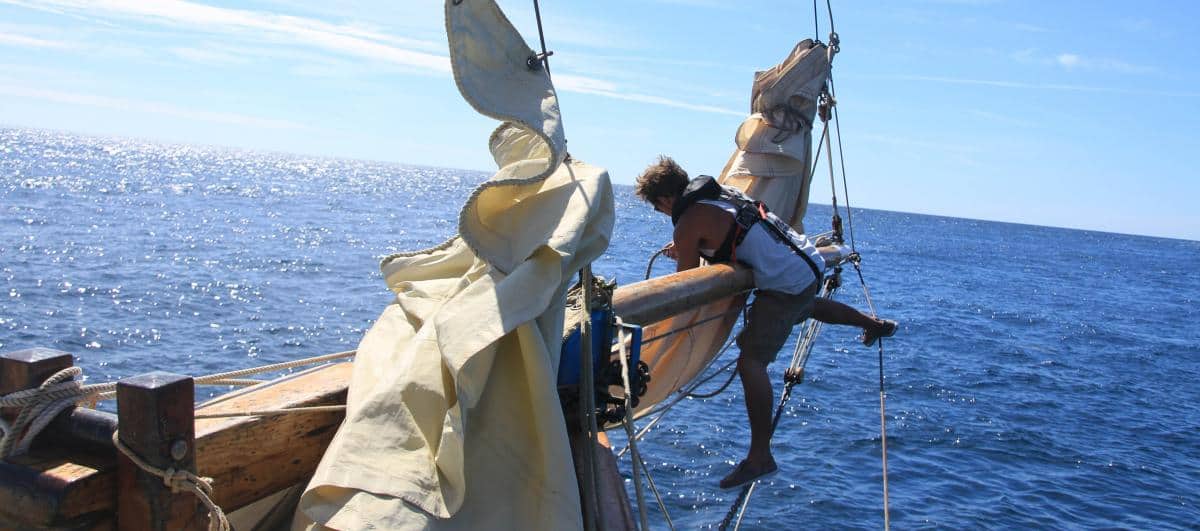
5 places not to wear flip flops (thongs) on a boat
There is a lot of walking backwards on sailing ships and traditional boats. With flip flops or thongs you can easily walk out of them.
Classic flip flop overboard territories are:
- Walking out on bowsprit wires
- Climbing back down the rigging, especially dangling over futtock shrouds
- stepping off foot ropes backwards – when aloft
- Descending rope ladders backwards into dinghies
- Companionway steps – sailors are supposed to do it backwards
- Playing kiss chase with the bosun
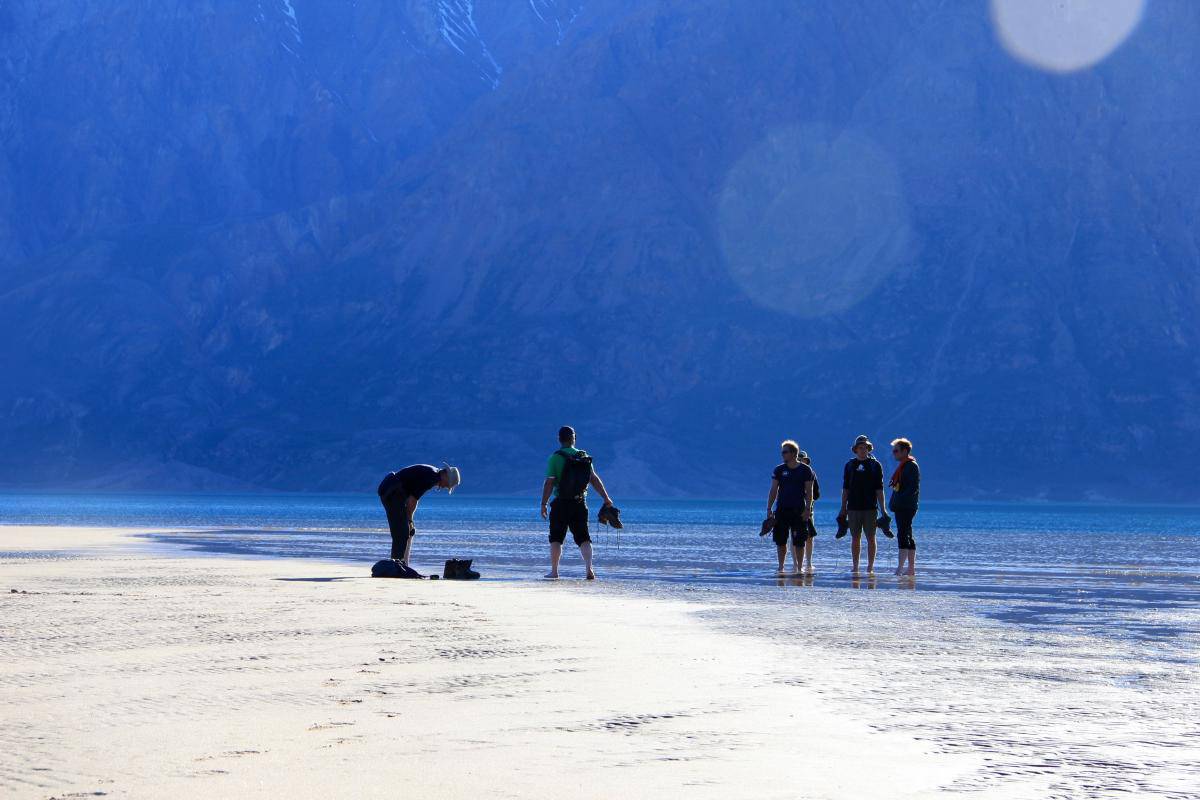
Sensible Sailor Shoes – Footwear Pros and Cons
- Rubber Boots in Summer?
-
Nobody wants to take sailing boots in summer, but there are a few advantages in some destinations. Midge protection for your ankles in Scotland. Summer Arctic destinations like Svalbard, Greenland, Lofoten or NW Passage and even Northern Europe can chuck some rough summer gales at you, so you won’t feel totally stupid arriving with wellies. You can also collect mussels in them.
- Walking boots for versatility
-
good for rugged walking ashore and cooler days on deck. Bomb proof protection for feet if you are a bit clumsy and waterproof in light rain if wearing salopettes. Great for climbing rigging without getting your feet squished between wire shrouds. Lightweight Goretex fabric boots are best but wash them in fresh water when you come home.
- Sandals with toe protection
-
Try Keen, Merrell or cheap lookalikes. Offers best of both worlds. Cool, quick drying, good protection for toes or playing footie on the beach. Cons are when they fill up with sand it doesn’t come out.
- Leather Deck Shoes
-
Look like a proper yachtie. Offers good grip and protection. Fashionistas need to watch which label they buy. Personally I gave up wearing them as too flat for career sailor on my feet all day.
- All Terrain Sandals
-
Sizing -make sure your toes don’t poke over edge. Cheap option with good arch support. Ideal for deck and ashore and don’t take up much space packing. Not warm when wet, but not much summer footwear is. Fabric dries quicker than leather.
- Sports shoes
-
Perfectly adequate but you need a second shoe option as they take ages to dry if they get wet….and they will.
- Neoprene booties or soft soled rockpool shoes
-
I wouldn’t. Neoprene type windsurfing in dinghy boots are not designed for walking or climbing. In terms of warmth they work the same way as a wetsuit. Warm when actively moving in water. Freezing if wearing all day. No arch support, easy to bruise heels, get ‘trench foot’ or get Plantar Facitius if you haven’t got super strong foot muscles.
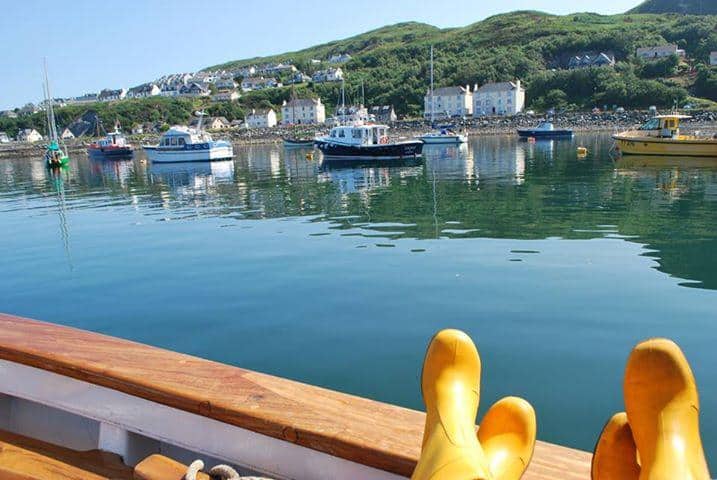
Debbie’s Footwear Top Choice:
Winter/Antarctic/Spring/Autumn
- Musto Ocean leather boots – waterproof and breathable.
- Lightweight walking boots (if exploring ashore in wild places)
- Keen Newport Sandals with covered toe
Summer or Winter Sun destinations
- 2 x keen sandals
- girlie party shoes
